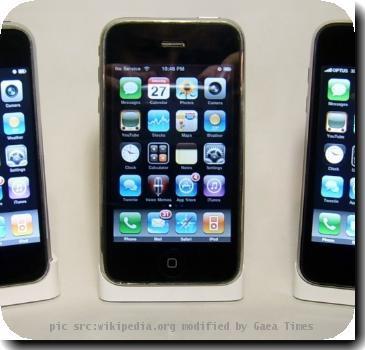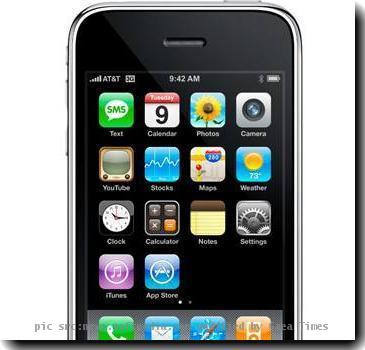Apple’s approach to iPad e-books could create confusion: Which software will open which book?
By Peter Svensson, APSunday, January 31, 2010
Apple’s own approach to iPad e-books could confuse
NEW YORK — Even as Apple’s iPad will likely energize electronic reading, the new device is undermining a painstakingly constructed effort by the publishing industry to make it possible to move e-books between different electronic readers.
The slim, 1.5-pound “tablet” computer unveiled last week will be linked to Apple Inc.’s first e-book store when it goes on sale in a few months. The books, however, will not be compatible with Amazon.com Inc.’s Kindle or with the major alternative e-book system.
Apple’s creation of a third choice is likely to further frustrate and confuse consumers if they accumulate e-books for one device, then try to go back to read them later on a different one. The effect could be akin to having to buy a new set of CDs every time you get a new stereo system. It could also keep people from buying new e-readers as better models come out if they aren’t compatible with the books they already have.
This could cool consumers’ enthusiasm for e-books, the way sales of digital music downloads were hampered by a variety of copy-protection schemes.
“There are going to be some potentially painful lessons” for consumers when they try to move e-books they already own to new devices, said Nick Bogaty, senior manager of digital publishing business development at Adobe Systems Inc., which provides the major alternative e-book system.
Before the iPad’s debut, there have been two main camps in the e-book industry.
The e-books that Amazon sells work only on the Kindle and on Amazon’s software, which can be loaded for free on PCs and some smart phones. Everyone else, including Sony Corp., Barnes & Noble Inc. and public libraries, have gathered around Adobe’s system.
Adobe doesn’t sell books itself, but provides software to booksellers and libraries so they can sell and lend books that can be opened on multiple devices. Like the Kindle store, the Adobe system uses a copy-protection system that prevents buyers from reselling the books or distributing them online.
Apple would not comment about the plans for its bookstore, but Adobe said its system isn’t being used by Apple.
Apple already has its own copy-protection system for iTunes and can easily extend that to e-books.
“I don’t see Apple feeling like they need to come in as ‘the collaborator.’ That’s not their style,” Forrester Research analyst James McQuivey said.
Apple has said it would embrace the EPUB format for its e-books. Although that’s the format adopted by the Adobe camp, that alone does not ensure compatibility because Apple would be using its own copy-protection scheme on top of it.
Apple is thus set to create a third technology camp in the e-book industry. Consumers who start buying e-books and want to go back to their books after a few years would have to make sure they have a compatible device, or at least compatible software. That can be pretty complicated.
Even if Apple uses its own copy-protection system, it doesn’t preclude books using the Kindle or the Adobe scheme from being read on the iPad or an iPhone as long as Apple continues to allow outside parties to develop e-reading software for the Apple devices. The user would just have to remember which book goes with which software.
However, it’s unlikely that books bought from Apple’s store would work on non-Apple devices, except for PCs running iTunes.
So far, no media industry has managed to unite on one copy-protection system for downloads. Music retailers, including Apple, used a variety of schemes before ultimately ditching copy protection entirely as customers found the limitations to be a big hassle. Music from iTunes couldn’t be moved to a digital media player linked to Microsoft’s store, and so forth.
Movies and television shows are still sold and rented with multiple copy-protection systems, though, so you can’t move an iTunes video to a Microsoft Zune player.
Forrester’s McQuivey believes the division into several e-book camps will persist for years, but may eventually narrow to just two alternatives, one of them being Amazon’s.
He doesn’t believe copy protection will ever go away for e-books. It died for music largely because CDs were never copy-protected, he noted, so consumers opted to buy them and convert them to digital files instead of buying downloads. Printed books, though they carry no copy protection, are difficult to convert to a digital format in the home.
As the market leader, Amazon has the scale to hold out with its own system, McQuivey said. Analysts estimate it has sold 3 million Kindles, and Amazon says it now sells six Kindle books for every 10 printed copies of books that are available in both formats.
All the same, the publishing industry has high hopes for the iPad, which unlike the Kindle and most other e-readers, will have a color screen that can show video.
Carolyn Reidy, the CEO of Simon & Schuster, said the iPad seems like a “terrific device,” citing the clear screen and the ability to turn pages by touching a finger to the screen, as opposed to pushing a button, as the Kindle requires.
She said the fact that Apple already has 125 million customer credit card numbers through its iTunes store could add millions of potential book customers when the iPad goes on sale in two months, starting at $499.
Any disappointment because of confusion over copy protection could be offset, at least in the short term, by the excitement and publicity caused by trendsetter Apple’s entry into the e-book market.
The addition of Apple to the e-book market also will likely have an effect on ongoing pricing disputes in the industry.
Amazon.com said Sunday it will give in to publishing giant Macmillan and agree to sell electronic versions of its books even at prices it considers too high. The retailer had pulled Macmillan books Saturday, including e-books for Amazon’s Kindle e-reader, in a disagreement over the publisher’s new pricing model for e-books.
Amazon wants to tamp down prices as it faces more competitors. But Macmillan and other publishers have criticized Amazon for charging just $9.99 for best-selling e-books on its Kindle e-reader, a price publishers say is too low and could hurt sales of higher-priced hardcovers.
AP National Writer Hillel Italie in New York contributed to this report.
Tags: Arts And Entertainment, Books And Literature, Computing And Information Technology, Consumer Electronics, Digitization, E-book Readers, Ipad, Media Distribution, Music Downloading, New York, North America, Software, United States

